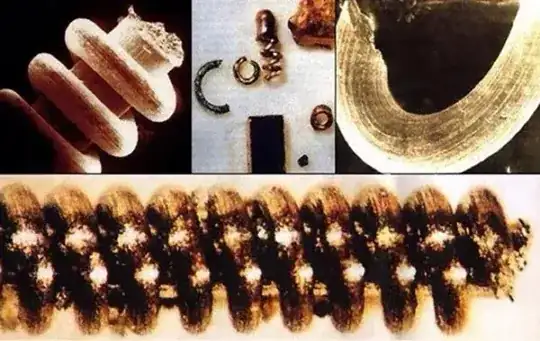This article tells a fantastic story of mysterious nanoscale artifacts found in the Ural Mountains in 1991.
These manufactured coils were initially discovered during geological research associated with the extraction of gold in the Ural mountains. These pieces include coils, spirals, shafts, and other unidentified components.
According to an analysis from the Russian Academy of Sciences in Syktyvkar, the largest pieces found are mostly copper, while the smallest are made of tungsten and molybdenum.
While the largest of these objects measure 1.18 inches, the smallest are only 1/10,000th of an inch, and many exhibit Golden Mean proportions. Their shape suggests that they are manufactured and not naturally occurring metal fragments. In fact, they have been found to closely resemble the same miniature components of contemporary nanotechnology.
They have apparently been known and studied for some time too:
The artifacts have been studied at four different facilities in Helsinki, St. Petersburg, and Moscow. However, further research into these tiny structures seems to have ended in 1999 with the death of Dr. Johannes Fiebag, a principal researcher of the find.
Were these nanostructures found in the Ural Mountains?
